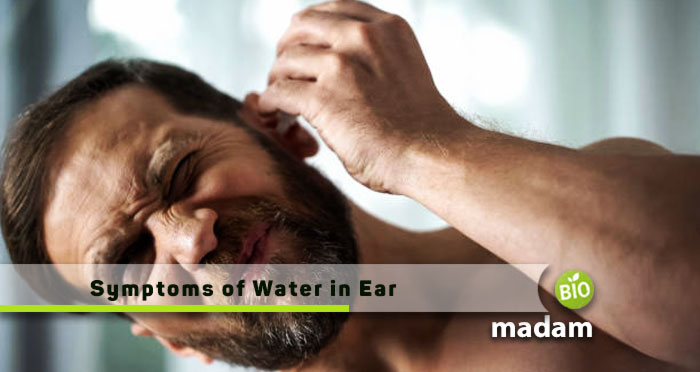Recently updated on October 11th, 2022 at 01:36 pm
Having water stuck in your ear is very common if you are a regular swimmer or scuba diver. Although swimming has numerous benefits, unsafe swimming can lead to the accumulation of water in your ear. There are some ways to avoid water going into the ear while swimming or showering. Following them can be helpful but still, there are chances it can go and stay there. Having water in your ear can be quite uncomfortable and lead to severe issues if not treated in time.
If you wonder how long can water stay in the ear, it can stay in the ear for around 1 to 2 days. But it is important to remove the water from the ear, or it may result in Otitis Externa – Swimmer’s Ear.
What is Swimmer’s Ear?
Swimmer’s ear or Otitis Externa is the outer ear infection from the eardrum to the outside end of the ear canal. It typically occurs due to bacterial infection but may also be fungal. A swimmer’s ear often occurs when water stays in the ear for too long, offering a moist environment to facilitate the growth of bacteria inside the ear canal.
However, you must not try to remove water from your ear by using cotton swabs or your fingers. It can damage your ear, leading to a serious infection. Otitis media typically causes harm to the epithelial and connective tissue including cartilage and the tympanic membrane. It may also cause damage to the epithelium that rests on the connective tissue membrane.
What are the Symptoms of Water in the Ear?
Water in the ear can be quite uncomfortable, and you can easily understand that something is wrong. Besides the discomfort, you may also experience other signs and symptoms if you have water in the ear. The symptoms are classified as Mild, Moderate, and Serious symptoms. The Mild symptoms of water in the ear are:

Slight Reddish Skin Inside the Ear
One of the initial symptoms of water in the ear is the redness of the skin. It typically occurs as a result of a bacterial infection. You must not touch it to check it as it may damage the skin further.
Itching in the Ear Canal
Another common symptom is itching in the ear canal. You may feel a continuous urge to itch your ears. But, if itching is accompanied by redness of the skin or pain, you must avoid it and visit a doctor.
Odorless Fluid Coming Out of the Canal
Sometimes you may also experience secretion of fluid from the ear canal. It is typically water and the debris excreting from the ear; it is odorless. Yet, it is not suitable to let it come out like that. Instead, take immediate treatment to fight infection inside the ear.
When these mild symptoms are not treated in time, they may worsen, causing a serious infection inside the ear. The aggravated infection presents itself in the form of moderate symptoms before the condition becomes immensely serious.
Increased Redness and Itching
The first symptom that worsens is the redness of the ear and itching. When the infection is left untreated, the symptoms become severe, and the outer ear becomes noticeably red. You may also want to itch your ear more than previously.
Increased Fluid Secretion
Besides itching and redness, people also experience more fluid coming out of the ear. It is the ear’s way of signaling an internal condition that needs medical assistance as soon as possible.
Severe Pain in the Ear
Some people may not feel any pain in the ear canal when they develop the Swimmer’s ear; however, the symptoms exhibit themselves over time. Sudden excruciating pain in the ear is also one of the moderate symptoms of water in the ear.
Loss of Hearing
As the situation continues to worsen, it is possible to feel a loss of hearing. It is a problematic situation, and you must not take it lightly as the presence of water is blocking the ear canal, restricting your hearing ability.
When Should you Visit a Doctor?

The symptoms of Swimmer’s ear must not be ignored, and you should visit the doctor as soon as the initial signs appear. Though you do not see the doctor during mild or moderate symptoms and wait for the water to come out, it is inevitable to get treatment as they become serious eventually. If the treatment is avoided during moderate signs and symptoms, you may experience exacerbated symptoms of Otitis Externa like
- Fever
- Increased pain that may also reach your neck or face
- More hearing loss
- Redness and blockage in the ear canal
FAQs
Who can get Swimmer’s ear?
Swimmer’s ear is common in people of all ages. Yet, young children and teenagers are more susceptible to bacterial infections in the ear canal than adults. They must be taught not to try to dry it using cotton swabs and tissues.
Why does Swimmer’s ear occur?
A swimmer’s ear occurs due to an infection in the outer canal. It may happen only due to water stuck in the ear or, more likely when the water is contaminated. It can be more serious when the sensitive skin of the ear canal is damaged.
What happens if you don’t treat Otitis Externa?
Otitis Externa may lead to unforeseen complications if not treated properly. In rare cases, it may reach the connective tissue and cause deep tissue inflammation (cellulitis). Also, if untreated for a long time, it can lead to permanent hearing loss.
The Bottom Line
Otitis externa may occur due to the presence of water in the ear not being treated timely. The symptoms include pain in the ear canal, redness, swelling, hearing difficulties, and odorless secretions from the ear. You might also feel “fullness” in the ear due to the presence of water. While you can dry the water using a blow dryer, visit a doctor as soon as possible to save yourself from complications. We recommend you follow this helpful guide to keep water away from getting into the ear in the future because prevention is better than cure.

Meet me; I am Paulina Zaniewska, who’s more hooked on providing the best health blog. I’ve always been so determined to compete as a nutritionist, and here I am, done with a Master’s in food technology. My brilliant performance throughout encouraged me to help people.

